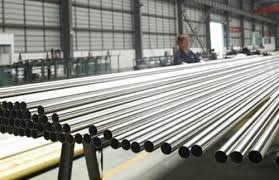What Are The Typical Applications Of Inconel 718 In The Oil And Gas Industry?
The oil and gas industry relies heavily on materials that can withstand extreme conditions while maintaining structural integrity. Engineers and operators need to know exactly which materials they can trust when equipment failure isn’t an option. What are the typical applications of Inconel 718 in the oil and gas industry?
Inconel 718 is primarily used in downhole tools, wellhead components, subsea equipment, and valve components in the oil and gas industry due to its exceptional resistance to high temperatures, corrosion, and pressure.
While this answer covers the basic applications, it’s worth continuing to read because understanding the specific operating conditions and performance characteristics of Inconel 718 in each of these applications can help you make better decisions about when to use this superalloy versus other materials.
How Does Inconel 718 Perform In Different Oil And Gas Applications?
In downhole tools, 718 Inconel excels at temperatures up to 1300°F (704°C) while maintaining its mechanical properties. This makes it ideal for drilling components, measurement while drilling (MWD) tools, and logging while drilling (LWD) equipment that must withstand extreme depths and temperatures.
For wellhead components, this superalloy provides excellent resistance to H2S (sour gas) environments and chloride stress corrosion cracking. These properties are crucial for components like hangers, flanges, and connectors that are exposed to corrosive well fluids and gases over extended periods.
In subsea applications, Inconel 718’s resistance to seawater corrosion and high-pressure environments makes it valuable for components like manifolds, connectors, and control systems operating at depths of up to 10,000 feet.
What Are The Key Advantages Of Inconel 718 Over Other Materials?
The primary advantage of Inconel 718 is its unique combination of high strength and corrosion resistance at elevated temperatures. While other materials might offer one of these properties, few can match this superalloy’s overall performance package.
The material maintains its yield strength above 120 ksi even at temperatures where standard stainless steels would begin to fail. This strength retention and its resistance to chloride-induced stress corrosion cracking make it superior to conventional stainless steel in many oil and gas applications.
Another significant advantage is its good machinability compared to other superalloys, making it more cost-effective to manufacture complex components despite its higher cost.
What Are The Cost Considerations When Using Inconel 718?
While Inconel 718 costs 5-10 times more than standard stainless steel, its long-term value proposition often justifies the investment. The material’s durability and resistance to harsh environments can significantly reduce maintenance and replacement costs.
The total cost of ownership should consider factors beyond just material costs. Equipment downtime in oil and gas operations can cost hundreds of thousands of dollars per day, making the reliability of Inconel 718 components a crucial factor in the overall economic equation.
However, it’s important to note that Inconel 718 should only be specified where its unique properties are truly needed, as over-specification can lead to unnecessary costs without additional benefits.
What Are Common Fabrication Methods For Inconel 718 Components?
Inconel 718 can be fabricated using various methods, with machining and welding being the most common. The material responds well to conventional machining techniques, though cutting speeds typically need to be slower than those used for standard steels to prevent work hardening.
Welding Inconel 718 requires specific procedures to maintain its desirable properties, including proper pre-heating and post-weld heat treatment. Gas Tungsten Arc Welding (GTAW) and Electron Beam Welding (EBW) are preferred methods due to their precise heat control and ability to produce high-quality welds.
Advanced manufacturing techniques like powder metallurgy and additive manufacturing are becoming increasingly popular for producing complex Inconel 718 components, offering potential cost savings and design flexibility for certain applications.
What Are The Maintenance Requirements For Inconel 718 Equipment?
Despite its durability, Inconel 718 components require regular inspection and maintenance to ensure optimal performance. Regular visual inspections can identify early signs of wear or damage, while non-destructive testing methods like ultrasonic testing can detect internal flaws.
Surface cleaning and protection are important considerations, especially in marine environments where salt deposits accumulate. While the material is highly corrosion-resistant, proper cleaning procedures can help maintain its protective oxide layer and prevent potential issues.
When repairs are necessary, they should be performed by qualified technicians familiar with Inconel 718’s specific welding and heat treatment requirements to maintain the material’s properties and prevent potential failures.
READ MORE : Overcoming 10 Payroll Challenges in Manufacturing
Redefining Strength and Durability
If you’re involved in specifying materials for oil and gas equipment, start by reviewing your current applications where standard materials are experiencing frequent failures or requiring excessive maintenance. These could be prime candidates for upgrading to Inconel 718, particularly in areas exposed to high temperatures, corrosive environments, or extreme pressures. Just remember to conduct a thorough cost-benefit analysis considering the initial investment and long-term operational savings before switching.

